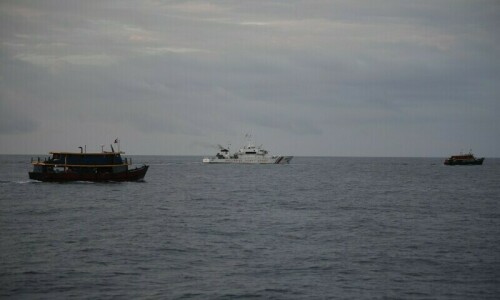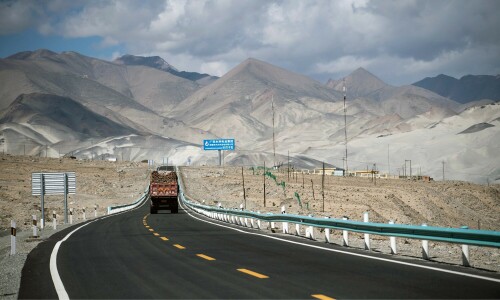BEIJING: Ahead of a three-day summit with African leaders starting on Wednesday, China has vowed to beef up its vast Belt and Road global infrastructure initiative, promising “high-quality cooperation”.
Africa is already a key Belt and Road Initiative (BRI) region, with Chinese companies signing contracts there worth more than $700 billion between 2013 and 2023, according to Beijing’s commerce ministry.
However, China’s investment in the continent has been slammed by critics who accuse the BRI of saddling countries with exorbitant debt or funding projects that “damage the environment”.
Kenya’s Standard Gauge Railway — built with finance from Exim Bank of China — connects the capital Nairobi with the port city of Mombasa, and has cut journey times from 10 hours to four since opening in 2017.
Road, railway, mines, power plants among key projects worth $700bn
At $5bn, it is the country’s most expensive infrastructure project since it won independence more than 60 years ago. But a second phase meant to continue the line to Uganda never materialised as both countries struggled to pay down BRI debts.
Kenya’s President William Ruto last year asked China for a $1bn loan and the restructuring of existing debt to complete other stalled BRI construction projects. The country now owes China more than $8bn.
After China established its first permanent overseas naval base in Djibouti in 2016, it also helped develop the east African country’s nearby Doraleh multi-purpose port.
The reportedly $590 million military base is strategically placed between the Red Sea and Gulf of Aden. Beijing has said the base is used to resupply navy ships, support regional peacekeeping and humanitarian operations, and combat piracy, though its proximity to a US military base has raised concerns of espionage.
According to state broadcaster CCTV, BRI investment in Africa has helped build over 12,000km of road and railway track, around 20 ports, and more than 80 power facilities.
In Mozambique, China Road and Bridge Corporation built Africa’s longest suspension bridge, connecting the capital Maputo with its suburb of Katembe.
Previously, the quickest way across the Bay of Maputo was by ferry. Road travel required driving 160km on unpaved roads susceptible to flooding.
The bridge, which opened in 2018, cost an estimated $786m, 95pc of which was financed by Chinese loans.
In recent years, BRI investment in Africa has shifted to mining the minerals needed to fuel China’s high-tech and green industries, such as electric vehicles.
In 2023, China invested $7.8bn in mining in Africa, according to US-based think tank the American Enterprise Institute. That includes a $1.9bn deal, reached last year, by state-owned MMG to buy the Khoemacau mine in Botswana, one of the world’s largest copper mines.
In July, Chinese firm JCHX Mining Management agreed to buy Zambia’s indebted Lubambe copper mine. China has also invested in cobalt and lithium mines in Zambia, Namibia and Zimbabwe.
Chinese funding in Africa has included dozens of investments in power generation, leading to criticism of the BRI’s environmental impact.
Chinese companies were contracted to build a coal-fired power plant in Kenya but the government cancelled the project in 2020 after protests and opposition to its environmental impact.
In Nigeria, Chinese loans are part-funding the $4.9bn construction of the Mambilla hydroelectric plant, which will be the country’s largest power station.
Published in Dawn, September 2nd, 2024














































Dear visitor, the comments section is undergoing an overhaul and will return soon.